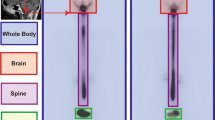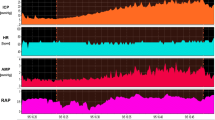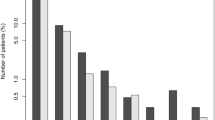Summary
Of 600 patients submitted to radioisotope cisternography carried out with radioiodinated human serum albumin (I131-HSA) a group of 140 had head injuries. Our investigation was intended to study the modifications of CSF circulation and absorption which accompany cranio-cerebral trauma. Of 88 head injured patients who did not undergo operation 44 had transient loss of consciousness, and 44 were in prolonged coma. Fifty-two patients underwent operation. Of these 5 had skull fractures with dural lesions, 7 had extradural haematomas, 19 had subdural haematomas, and 21 had brain contusions.
Cisternograms were performed at different time intervals after trauma, and in some instances the test was repeated in order to study the possible long term alterations of CSF circulation and absorption. Abnormalities of cisternographic pictures are classified into the following groups: 1° asymmetric diffusion; 2° operative cavity stagnation; 3° ventricular reflux; 4° associated abnormalities.
Cisternographic features are analysed in relation to the corresponding clinical and pneumoencephalographic patterns in the patients examined.
These investigations may enable us to recognise possible indications for shunt procedures in the management of CSF absorption defects, which are so frequently apparent after head injury.
Similar content being viewed by others
References
Adams, R. D., G. M. Fischer, S. Hakim, R. G. Ojemann, and W. H. Sweet, Symptomatic occult hydrocephalus with “normal” cerebrospinalfluid pressure: treatable syndrome. New Eng. J. Med.273 (1965), 117–126.
—, Further observations on normal pressure hydrocephalus. Proc. Roy. Soc. Med.59 (1966), 1135–1139.
Akerman, M., P. Derome, et G. Guiot, Le transit radio-isotopique dans les hydrocephalies. Neurochirurgie16 (1970), 117–126.
Alker, G. J., E. V. Leslie, and F. Glasauer, Five years experience with isotope cisternography and ventriculography. IX Symposium Neuroradiologicum, Goeteborg, 24/29; 8, 1973. Book of Abstracts, n. 97.
Ashburn, W. L., and G. Di Chiro, Radioisotope cisternography and ventriculography. In: Radionuclide Application in Neurology and Neurosurgery. Wang, Y., and P. Paoletti, eds., p. 165. Springfield, Ill.: Ch. C Thomas. 1970.
Bannister, R., E. Gilford, and R. Kocen, Isotope encephalography in the diagnosis of dementia due to communicating hydrocephalus. Lancet2 (1967), 1014–1017.
Benson, D. F., M. Le May, and D. H. Patten, Diagnosis of normal pressure hydrocephalus. New Eng. J. Med.283 (1970), 609–615.
Creissard, P., A. Redondo, L. Harispe, et B. Jacquinot, Le transit gamma-encéphalographique dans le L.C.R. chez les traumatisés du crâne (et en période post-operatoire). Minerva Neurochirurgica16 (1972), 175–179.
Di Chiro, G., Movement of the cerebrospinal fluid in human beings. Nature (London)204 (1964), 290–291.
—, W. L. Ashburn, and W. H. Briner, Technetium Te99m serum albumin for cisternography. The use of high specific activity of Tc99m serum albumin as a tracer for subarachnoidal and ventricular scintiphotography. Arch. Neurol.19 (1968), 218–227.
—, A. K. Ommaya, W. L. Ashburn, and W. H. Briner, Isotope cisternography in the diagnosis and follow-up of cerebrospinal fluid rhinorrea. J. Neurosurg.28 (1968), 522–529.
—, W. L. Ashburn, and A. S. Grove, Which radioisotopes for brainscanning. Neurology18 (1968), 225–236.
— —, L. S. Zeiger, and G. L. Shall, Radioisotope encephalo-cisternography and encephalo-ventriculography. J. Neurosurg.36 (1972), 127–132.
Forslo, M., B. Forssman, S. Jarpe, and C. Radberg, RIHSA cisternography in the study of suspected hydrocephalus diagnostic and therapeutic experiences. II Symposium Neuroradiologicum, Goeteborg 24/29; 8, 1970. Book of Abstracts, n. 99.
Frigeni, G., S. M. Gaini, P. Paoletti et R. Villani, Prime esperienze di cisternografia e ventriculografia isotopica in pazienti di interesse neurochirurgico. Min. Neurochir.14 (1970), 215–224.
— — — —, Isotope cisternography. Consideration on abnormal pictures. Acta Neurochir. (Wien)25 (1972), 145–163.
— — — —, La cisternographie isotopique dans l'étude des altérations de la dynamique du L.C.R. après traitement neurochirurgical. Min. Neurochir.16 (1972), 186–191.
Frigeni, G., S. M. Gaini, P. Paoletti et R. Villani, Study of possible postsurgical complications in neurosurgery using radioisotope cisternography. In: Cisternography and Hydrocephalus. A Symposium, ed. J. C. Harbert, cap. 23. Springfield, Ill.: Ch. C Thomas. 1972.
- - - - Post-surgical normal pressure hydrocephalus. In press on Excerpta Med. Int. Congr. Series 1972.
Gaini, S. M., P. Paoletti, R. Villani, and G. Frigeni, High specific activity I131 and Tc99m albumin for studying the cerebrospinal fluid circulation in infantile and childhood hydrocephalus. Acta Neurochir. (Wien)23 (1970), 31–46.
Hakim, S., Algunas observaciones sobre la pression del L.C.R. Sindrome Hidrocefalica en el adulto con “presion normal” del L.C.R. Universidad Javeriana, Tesis de Grado: 957, Bogotà, Columbia, S.A. majo 1964.
— and R. D. Adams, The special clinic problem of symptomatic hydrocephalus with normal cerebrospinal fluid pressure. J. Neurol. Sci.2 (1965), 307–327.
— — and C. M. Fischer, Occult Hydrocephalus. Eng. J. Med.274 (1966), 466–471.
—, Biomechanics of hydrocephalus. In: Cisternography and Hydrocephalus. A Symposium, ed. J. C. Harbert, cap. 3. Springfield, Ill.: Ch. C Thomas. 1972.
Heinz, E. R., D. O. Davis, and H. Karp, Abnormal isotope cisternography in symptomatic occult hydrocephalus. Radiology95 (1970), 109–120.
— —, Clinical, radiological, isotopic and pathologic correlation in normotensive hydrocephalus. In: Cisternography and Hydrocephalus. A Symposium, ed. J. C. Harbert, cap. 17. Springfield, Ill.: Ch. C Thomas. 1972.
James, A. E., F. H. Do Land, and F. J. Hodges, Normal pressure hydrocephalus. Role of cisternography in diagnosis. J. A. M. A.213 (1970), 1015–1020.
McCullough, D. C., J. C. Harbert, G. Di Chiro, and A. K. Ommaya, Prognostic criteria for cerebrospinal fluid shunting from isotope cisternography in communicating hydrocephalus. Neurology20 (1970), 594–598.
Patten, D. H., and D. F. Benson, Diagnosis of low pressure hydrocephalus by C.S.F. I131 scanning. J. Nuc. Med.8 (1967), 267–272.
Tator, C. H., J. F. Fleming, R. H. Sheppard, and V. M. Turner, A radioisotopic test for communicating hydrocephalus. J. Neurosurg.28 (1968), 327–340.
Author information
Authors and Affiliations
Additional information
This work was supported by the “Consiglio Nazionale delle Ricerche”, Rome, Italy. —Grant No. 71.00905.043800.
Rights and permissions
About this article
Cite this article
Villani, R., Gaini, S.M., Paoletti, P. et al. Radioisotope cisternography in head-injured patients. Acta neurochir 32, 25–33 (1975). https://doi.org/10.1007/BF01405900
Issue Date:
DOI: https://doi.org/10.1007/BF01405900




